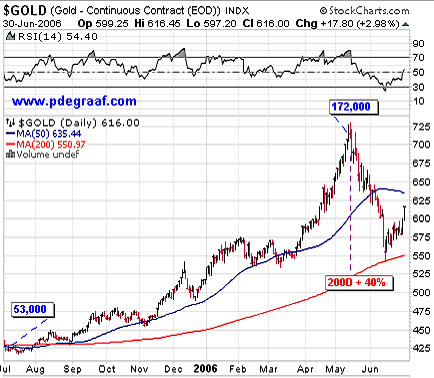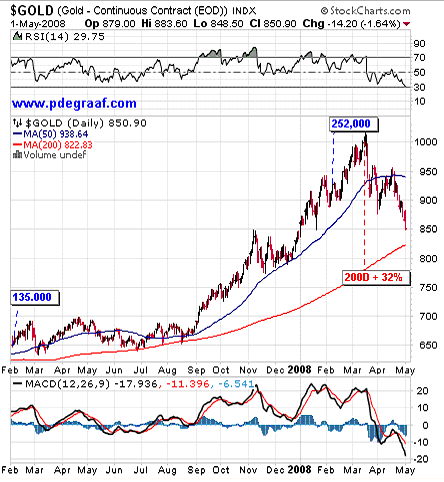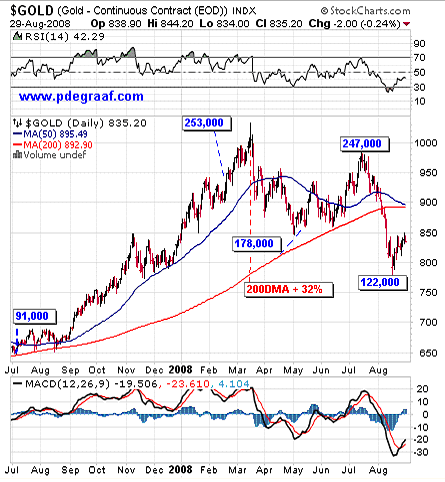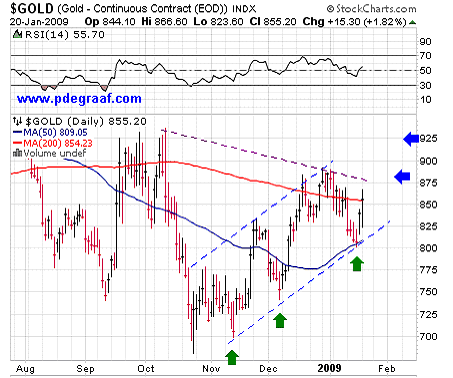Could a Private Firm Force the Government to Do It?
Antal E. Fekete
Gold Standard University
E-mail: aefekete@hotmail.comHow to rebuild the shattered credit systemPeople ask: "Isn't the Mint already open to gold, producing Gold Eagles and Buffaloes?" Opening the Mint to gold has a technical meaning, namely, opening it to the free and unlimited coinage of gold on private account. The Gold Eagles and Buffaloes are produced on Treasury account in limited quantities and sold at a premium as souvenir coins. It is a ploy to show that gold coins would just not circulate as money. Well, they would if there was no premium and the market was saturated.
Not until that happens do I see any hope for the world's greatest and most permanent asset, wealth tied up in gold, to leave its hiding place, get mobilized and start discharging its duty for which it is so superbly suited: rebuilding credit and refinancing world trade on a sound basis. Irredeemable promises to pay by default-happy governments can under no stretch of the imagination serve as a sound basis for world credit and world trade.
Unless the ice is broken and one country does open its Mint to gold, the same pattern that was established in 1971 (when the U.S. Government defaulted on its international gold obligations) would continue to the further detriment of the world's prosperity. The output of the world's gold mines, plus whatever gold trickles down from the public sector, will go into hiding and will not benefit society. The world economy is literally bleeding. It is bleeding credit that keeps factories humming and cargo ships sailing. There is no other way to stop the hemorrhage than opening the Mint to gold. The battle cry should be: put gold back into circulation to save our civilization and to save the world! People must be aware what the malady is and what the remedy should be.
The full meaning of 1971Apart from the enormity of a great government reneging on its solemn obligation, sealed by international treaties, confirmed by several sitting Presidents, to pay holders of its short-term debt gold at a fixed rate of exchange, we should remember another aspect of the 1971 default. It triggered the world's greatest deflation ever to take effect with a lag lasting about one generation.
The world prospered before 1971 because it had the U.S. Treasury as its residual supplier of monetary gold. The wholesome effect of this arrangement was that people were willing to pay out gold. They were confident that they could get back their gold exactly on the same terms. Confidence permeated producers, banks, trading houses, shipping lines, right down to the lowliest consumer. They could make deals with one another in the belief that the world's monetary system is not run by tricksters. It is run by upright men who know the meaning of the word 'honor'.
But once the commitment to redeem dollars in gold was broken, people became reluctant to pay out gold. They were no longer certain that they could get their gold back on the same terms. This froze the stock of the world's monetary gold. More ominously, newly mined gold started to go into hiding, and the world economy had to be financed through the creation of synthetic credit.
For those of us who do not subscribe to the Quantity Theory of Money, this was deflation waiting to happen. The synthetic credit was - what else? - the broken promise of the defaulting banker. People with a logical mind knew that this arrangement had to be temporary. Only a deranged man would reward default by promoting the dishonored monetary instrument from the bottom of the garbage heap to the position of the highest-powered money of the international monetary system. After all, the U.S. government did have the gold it needed to run the world's credit system. What it did not have, but could easily get with incorruptible politicians, a matching foreign policy free from entanglements, and a matching social policy free from the 'free lunch' mentality.
The present deflation is open-ended, as it is not known how much devaluation the dollar will have to undergo before it can be tethered once more to gold - as it was done exactly 75 years ago. To stop deflation, the flight into gold must be stopped first, as it was done by the U.S. in January, 1934. President-elect Obama has already named his candidate to run the Treasury. An historical opportunity has been missed. The very same people who engineered and orchestrated the present crisis will be put in charge to rectify it. They are dyed-in-the-wool Keynesians or Friedmanites.
America's antagonists are just as helplessOf course, the Arab countries, the Muslim countries, as well as the Asian powers (including Russia), which do not have carry the heavy Keynesian and Friedmanite ideological baggage, would love to start a new currency based on gold, and then take credit for saving the world. If they could, that feat would pass the torch of human civilization back to the Orient, and thereafter the Western governments could be deservedly castigated as the selfish and stupid satraps that landed the world in this incredible economic mess. They would hardly be invited to sit in the councils of nations, let alone to lead them. Worse still, the fear is that without the free flow of gold the world may get lost in the quagmire of a New Dark Age, in which law and order disappears, along with the disappearance of gold and silver.
Yet all the attempts of the Arab, Muslim, and Asian powers to put gold back into the monetary system have misfired, precisely because they have 'forgotten' to open their Mint to gold, which is the key to a New Golden Age.
Why gold?I have dealt with that question several times in my earlier writings, but I shall say it again. Gold is absolutely indispensable for reconstruction, far beyond the limits imposed by gold's present valuation in the markets. The reason is that, once remobilized gold, and only gold, could carry a weight thousands of times greater than its nominal value. Gold, once put back into circulation, will regenerate credit which, under Western tutelage, has been allowed to disintegrate. The Western powers have fallen victim to the most inept and stupid Ponzi-scheme ever inflicted on people who are otherwise not illiterate: the Ponzi-scheme of Keynesian and Friedmanite economics. The 'miracles' that these two so-called economic systems can work depend on what I have described as a check-kiting scheme between the Treasury and the Central Bank. They conspire to accept each other's irredeemable promises to pay. For a time the shills could whip up sagging gambling spirit by their spectacular off-take at the gaming tables. But, ultimately, this Ponzi scheme, like any other, depends on an infinite supply of new fools. While the supply of fools in the world is very great indeed, it is not infinite. That is the only weak point in Keynesian and Friedmanite economics.
Without rebuilding credit on a gold foundation there is no hope for reconstruction, president-elect Obama's grandiose reflation plans notwithstanding. The U.S. Treasury is empty, nay, it is in a hole, of the size of several years' GDP. Government revenues are fading. American industry has been dismantled. Foreign creditors of the U.S. have had enough of the make-belief world of giving up real goods and real services in exchange for irredeemable promises to pay. Even if you put them under duress using military blackmail, they badly need those goods at home because they are themselves in deep trouble.
De facto opening of the MintI have been greatly discouraged and dismayed that the Western governments, in their dogged stubbornness, have refused to listen to the voice of reason and allowed their antagonists to advocate the return to a gold standard. The Western governments should have taken the initiative and made a coherent statement on their own position.
But then something unexpected happened, which gives us a ray of hope. Canada has been my adopted country for over half of a century. In many ways it is a decent country in this world of indecent governments. Canada has not used conscription to coerce young men to become cannon-fodder in foreign imperial and colonial ventures. It did not succumb to the 'Roosevelt-syndrome' in confiscating the citizens' gold. While taxes are high, on balance it may be a price worth paying in exchange for clean cities, sane banks, safe streets, and universal health care.
Canada's gold policy was free of the neurotic aspects of the American. Gold has never been declared contraband in Canada. While it is true that fools were put in charge of government-owned gold, and they sold it for a pittance to invest the proceeds in irredeemable obligations of the U.S. government, the Royal Canadian Mint started issuing gold coins as early as 1967 (to commemorate Canada's centennial.) Later, in 1979, with the issue of the Canadian gold Maple Leaf coin of one Troy ounce, 9999 pure, the Royal Canadian Mint created a coin that may well become the standard coin of a new emerging international gold standard. By now, 30 years later, many other countries are issuing gold coins to the same standard of weight and purity. As I shall explain below, the world treats these coins as being as perfectly fungible as only money can be, and refuses to treat them as souvenirs, keepsakes, or as a conversation-piece, which was the intention of their designers.
To be sure, the Royal Mint of Canada is not open to gold in the legal sense of the word. If it were, it would have made a commitment to convert gold, 9999 pure, free of seigniorage charges, into Maple Leaf coins, ounce for ounce, in unlimited quantities, to all comers. If there is no de jure commitment, is there a de facto commitment to the same effect?
That's what a Canadian firm decided to find out in 2007, and so far the results are encouraging. They show that the Royal Canadian Mint has taken upon itself the burden to provide the world with a reliable source of gold coinage at an acceptable cost. This firm buys the standard international "good delivery gold bar" of 400 Troy ounces or about 12.5 kg, 999 fine and exchanges it at the Mint for 400 Canadian Maple Leaf coins, paying a premium that, according to the firm, is small enough that it can sell the Maple Leafs profitably at the normal 7-9% premium, even during this latest rush into gold coins. As soon as the coins are sold, the firm is buying more good-delivery bars and converts them into Maple Leafs at the Mint. It keeps doing this. This is the exact opposite of the great coin melt of F.D. Roosevelt's fame, who confiscated the citizens' gold coins only to melt them down and to mark up the dollar value of the resulting ingots - a symbolic gesture to show that gold has been demonetized.
This Canadian firm leads the way to gold remonetization. It uses the agency of the Royal Canadian Mint to do it. Needless to say, there will be imitators both at the Mint level and at the arbitrage level. In particular, the premium on coined gold will decline. There will be a race of governments to offer the same service on a competitive basis. (Remember how the Kugerrand has found imitators in all major countries of the world?) Willy-nilly, the Mints are going to do what they have been conceived to do in the first place: put the citizens in charge to decide what the money supply should be. By the U.S. Constitution the power to create money is reserved directly to the people themselves, and should not be delegated.
As you can see, the Royal Canadian Mint is open to gold de facto. As more imitators enter the field, the de facto commitment to monetize gold will become permanent.
Reason for optimismI think it is impossible to exaggerate the importance of this fact. While the 7-9% premium is an eyesore and takes away from the purity of the scheme, and the lack of a de jure commitment to keep this facility open through thick and thin is deplorable, the bottom line is that the first tentative steps have been taken by a Western Country (blessed with a strong gold-mining industry, and with an unbroken history of gold trading and sound banking) to opening the Mint to gold. This gives plenty of reason for optimism.
A new stage in gold's evolution?
Two professors at Prince Sultan University in Riyadh, Saudi Arabia, H. Assenov and K. Petrov, have published a paper with the title: A New Stage in Gold's Return to Money (see References below.) In this paper they put forward the hypothesis that the market monetizes the one ounce standard gold coins regardless of shape and country of origin, as long as they have the right weight and fineness, as witnessed by the uniform price at which they are traded. They say that this is a new phenomenon that first appeared in December, 2008, the same time when gold backwardation first appeared as a threat to close down Comex warehouses. It means a great leap in the marketability of these coins due to perfect fungibility. Now a much larger pool of coins backing the trade is available. Both buyers and sellers dismiss the coins' idiosyncracies that would be of interest to numismatists and collectors. The authors suggest that this is a proof that gold's remonetization is in progress. Gold is not yet money, but it has cleared one of the most serious hurdles towards becoming money. The market for the standard gold one-ounce coin, 999 fine, is no longer fragmented.
The authors make no reference to the fact that the Royal Canadian Mint is de facto open to gold as shown by the activities of a private Canadian firm. This fact, in my opinion, plays a large part in the phenomenon the authors describe: the uniform valuation of all standard gold coins. However, it is significant that they noted the simultaneous appearance of backwardation in the December gold future contract at the Comex. They also quote Carl Menger's theory on the origin of money, that is, the rise of indirect exchange. Both the ugliest and the most beautiful gold coins are traded in indirect exchange strictly by the quantity and quality of metal content, completely disregarding the outward appearance of the coin. Whether the coin features the effigy of a bearded man or a kangaroo is of no consequence. The authors conclude their paper as follows:
Under the current financial order we use paper tickets with the picture of a bearded man that are currently printed in the trillions by another bearded man. Those tickets have had no backing for many decades, so there has been no restraint in their printing. Up until recently there has been a modicum of self-restraint in the printing process. However, since the Summer of 2008 all restraint has been thrown out of the window by the bearded man, a.k.a. Bailout Ben, who has indulged Congress and the Bankers in an historic multi-trillion dollar printfest. In response, common-sense people have rushed into gold as a store of value. Now that the value of gold is driven entirely by its purity and quantity, it is only a matter of time before gold is used again as a medium of exchange. Gold coins are no longer a numismatic delight, nor do they appear to be a Barbarian Relic. Gold is becoming money once again. Dollar holders beware!
Sprott Money Ltd.I tease my readers' curiosity no longer. I disclose that the Canadian firm that has harnessed the Royal Canadian Mint to change the course of history is
Sprott Money Ltd., established in 2007. The inspiration came from its founder, Mr. Eric Sprott himself. I salute him here as a man of great insight and courage. He firmly believes that gold should again be the international currency, by the choice of the people. He believes that the U. S. economy is in a state of total systemic failure. He says that we are in a depression today. He points out that the average bank is leveraged 25 or 30:1. He does not beat around the bush: he says that in a true mark-to-market, probably no bank would have any tangible capital left. He does not think that any economy that is paper-based can be insulated against the contagion of debasement that is the hallmark of the U.S. dollar.
In a recent interview (see References below) Sprott stated that during the past three years his organization has converted a lot of gold bars to gold coins at the Royal Canadian Mint, and then he went on:
We have lots of inventory; we are not seeing any signs that we are going to eat through our inventory of coins. But I always do worry that I've got to be able to buy the 400-ounce bars back, too. So we'll see. If it happens that I can't buy the bars back, I don't think I'll be selling the coins. (Emphasis added.)
I have included this quotation for its value as it so closely relates to the problem of backwardation in gold. When Sprott cannot buy any more 400-ounce bars, that's it: the curtain has fallen on the Last Contango in Washington. Backwardation is here to stay. And you will know it immediately because Sprott Money Ltd. will simultaneously withdraw its offer to sell Canadian Maple Leaf coins to retail customers. Not for sale at any price quoted in dollars, whether Zimbabwean or U.S.
We need lots of imitators for Sprott and lots of imitators for the Royal Canadian Mint, if we want to shorten the painful death-watch of this reactionary episode in the history of money, the experiment with the paper dollar backed, as it is, by the greatest collection of weapons of mass destruction: debt and thermonuclear warheads - if not much else.
ReferencesBy the same author:
The Rise and Fall of the Gold Basis, June 23, 2006Monetary and Non-Monetary Commodities, June 25, 2006The Last Contango in Washington, June 30, 2006Gold, Interest, Basis, March,7, 2007Gold Vanishing into private Hoards, May 31, 2007Opening the Mint to Gold and Silver, February 5, 2008Has the Curtain Fallen on the Last Contango in Washington? December 8, 2008These and other articles of the author can be accessed at the website
www.professorfekete.comThe Only Real Monetary Asset,
www.sprottmoney.comEric Sprott:
Gold: The Go-To Asset in Any Environment, The Gold Report 01/09/2009,
www.theaureport.comA New Stage in Gold's Return to Money, by H. Assenov and Dr. K. Petrov
www.financialsense.com/editorials/petrov/2008/1226.htmlCalendar of eventsSzombathely, Martineum Academy, Hungary, last weekend of March, 2009Encore Session of Gold Standard University Live.Topics: When Will the Gold Standard Be Released from Quarantine?The Vaporization of the Derivatives TowerLabor and the Unfolding Great DepressionGold and Silver in Backwardation: What Does It All Mean?San Francisco School of Economics, July-August, 2009Money and Banking, a ten-week course based on the work of Professor Fekete. The Syllabus of this course is can be seen on the website: www.sfschoolofeconomics.comJanuary 12, 2009



 4.0%
4.0%














![[Most Recent Quotes from www.kitco.com] [Most Recent Quotes from www.kitco.com]](http://www.kitco.com/images/live/t24_au_en_usoz_6.gif)
![[Most Recent Quotes from www.kitco.com] [Most Recent Quotes from www.kitco.com]](http://www.kitco.com/images/live/au_go_0030_ny.gif)
![[Most Recent Quotes from www.kitco.com] [Most Recent Quotes from www.kitco.com]](http://www.kitco.com/images/live/au_go_0365_ny.gif)
![[Most Recent Quotes from www.kitco.com] [Most Recent Quotes from www.kitco.com]](http://kitconet.com/charts/metals/silver/t24_ag_en_usoz_4.gif)
















